Quarrying
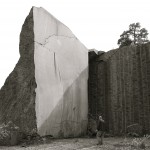
Small-scale quarries producing construction materials are a key part of the mining industry in Cambodia. Clay for brick and tile manufacturing and sand and gravel are found in many locations.Under the Law on Mineral Resource Management and exploitation (‘the mining law’) there are six types ef='https://opendevelopmentcambodia.net/topics/quarrying/ ' class='cambodia-color'>...
Multilateral development assistance
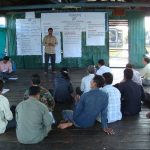
Mr Il Oeur, director of Analysing Development Issues Centre (ADIC), a domestic NGO and WorldFish partner in Cambodia, leads a local dialogue session. Photo by WorldFish, taken on 27 June 2013. Licensed under CC BY-NC-ND 2.0Multilateral aid is funding that is funneled between more than ef='https://opendevelopmentcambodia.net/topics/multilateral-development-assistance/ ' class='cambodia-color'>...
Environmental and biodiversity protection
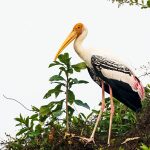
Cambodia is one of the most biodiverse countries in Southeast Asia. Biodiversity supports Cambodians ecologically, economically and culturally. It plays an important role in providing ecosystem services and economic development to achieve the Cambodian Millennium Development Goals including poverty reduction. ef='https://opendevelopmentcambodia.net/topics/environmental-and-biodiversity-protection/ ' class='cambodia-color'>...
SDG 4 Quality education
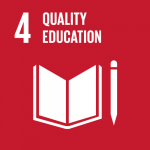
Sustainable Development Goal 4 – ensure inclusive and equitable quality education and promote lifelong learning opportunities for all – focuses on education as a fundamental human right that is necessary for the achievement of all the SDGs.25 education supports the achievement of gender equality by empowering women and is crucial to creating ef='https://opendevelopmentcambodia.net/topics/sdg-4-quality-education/ ' class='cambodia-color'>...
Water and sanitation
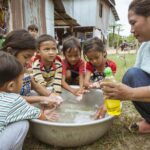
Children in Moung district, Battambang province, wash their hands with soap and water. Photo by WorldFish Cambodia, taken on 08 November 2018. Licensed under (CC BY-ND 2.0).Recognized as a global crisis, the United Nations has included water and sanitation in Sustainable Development Goal 6, ensuring ef='https://opendevelopmentcambodia.net/topics/water-and-sanitation/ ' class='cambodia-color'>...
Poverty policy and regulation
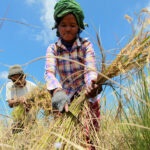
As a fast-developing nation, Cambodia has always found poverty one of its main challenges. The Rectangular Strategy states that eradicating poverty has long been one of the Royal Government of Cambodia’s (RGC’s) highest priorities.149 Since the country’s first major post-civil war election in 1993, Cambodia ef='https://opendevelopmentcambodia.net/topics/poverty-policy-and-regulation/ ' class='cambodia-color'>...
Court monitoring
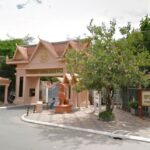
Respect for strong values is the key to citizens’ trust in their courts.245 The international values recognized for judges are independence and impartiality, integrity, equality of treatment, diligence and competence. A judge cannot both decide a case and have a personal interest in its resolution. ef='https://opendevelopmentcambodia.net/topics/court-monitoring/ ' class='cambodia-color'>...
Forest classifications
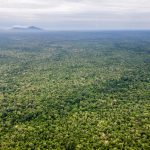
The classification of forests is set out in the Law on Forestry 2002. The law applies to both natural forests and plantations, and “defines the framework for management, harvesting, use, development and conservation of the forests in the Kingdom of Cambodia. The objective of this ef='https://opendevelopmentcambodia.net/topics/forest-classifications/ ' class='cambodia-color'>...
Trade policy and regulation
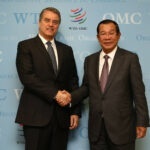
Cambodian Prime Minister Hun Sen were at the Aid for Trade Global Review 2019. Photo by World Trade Organization (WTO), taken on 03 July 2019. Licensed under CC BY-SA 2.0.International trade plays an essential role in improving Cambodia’s growth, employment and business opportunities. Trade policy ef='https://opendevelopmentcambodia.net/topics/trade-policy-and-regulation/ ' class='cambodia-color'>...
Forest protection support
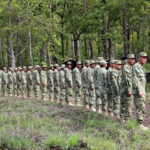
Cambodia is struggling to safeguard its forests while preserving economic growth since many people make a living via farming, logging, and other activities that might lead to deforestation. Almost 80% of Cambodians living in rural regions rely on forests for survival. On the other hand, ef='https://opendevelopmentcambodia.net/topics/forest-protection-support/ ' class='cambodia-color'>...
Primary and secondary education
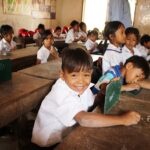
Article 68 of Cambodia’s Constitution states that the Government shall provide free primary and secondary education for all citizens and each individual shall pursue basic education for at least 9 years. education is a fundamental engine of social and economic development for a country, especially ef='https://opendevelopmentcambodia.net/topics/primary-and-secondary-education/ ' class='cambodia-color'>...
Ground water
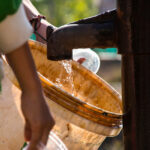
Cambodia relies heavily on its groundwater resources to overcome water shortages during the dry season. More than half of the population depends on it when enough surface water is not available. At a certain depth, the ground is saturated with water, and the upper surface ef='https://opendevelopmentcambodia.net/topics/groundwater/ ' class='cambodia-color'>...
Community fisheries
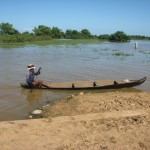
Community fishery refuges, Battambang, Cambodia. Photo by Alan Brooks/WorldFish, taken on 2 November 2011. Licensed under CC BY-NC-ND 2.0.Fishing practices in Cambodia are classified into three broad categories: small-scale or family fishing, medium-scale and large-scale or commercial fishing.In 2001, aware of the need to safeguard ef='https://opendevelopmentcambodia.net/topics/community-fisheries/ ' class='cambodia-color'>...
Social land concessions
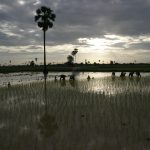
Social land concessions (SLCs) are intended to provide to the landless or land-poor land on which to establish residences and/or generate income through agriculture. The Cambodian Government that more than 30,000 households have received land as social land concessions. Despite its pro-poor intention, the SLC ef='https://opendevelopmentcambodia.net/topics/social-land-concessions/ ' class='cambodia-color'>...
Environment and natural resources policy and administration
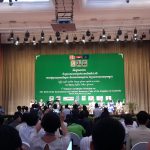
The 7th National Consultation Workshop on the Draft of the environment and Natural Resource Code of the Kingdom of Cambodia. Photo by Open Development Cambodia, taken on 22 March 2018. Licensed under CC BY-SA 4.0.With 76% of its people living in rural areas,469 Cambodia holds ef='https://opendevelopmentcambodia.net/topics/environment-and-natural-resources-policy-and-administration/ ' class='cambodia-color'>...
Water resources

Geographically, Cambodia is rich in rivers and water bodies. These water resources play an important role in economic and social development, particularly in agriculture, industry, environmental protection and tourism sectors. ef='https://opendevelopmentcambodia.net/topics/water-resources/ ' class='cambodia-color'>...
Agricultural commodities, processing and products
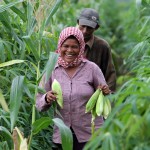
Farmers harvest corn from their farms, Cambodia. Photo by World Bank/Chhor Sokunthea, taken on 17 July 2013. Licensed under CC BY-NC-ND 2.0Key agricultural commodities and products include rice, rubber, corn (maize), vegetables and fruit, and cassava (tapioca). More than 90 percent of Cambodia’s agricultural exports ef='https://opendevelopmentcambodia.net/topics/agricultural-commodities-processing-and-products/ ' class='cambodia-color'>...
Marine and coastal areas
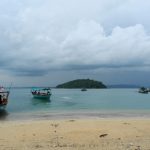
In terms of attractiveness, one of Cambodia’s assets is the relative absence of intense development along its coasts, in comparison with neighboring countries. The 440 kilometer-long coastline includes a large area of non-urbanized zones, where locals can make their livelihoods from coastal resources. Cambodia’s coastline ef='https://opendevelopmentcambodia.net/topics/marine-and-coastal-areas/ ' class='cambodia-color'>...
Protected forest
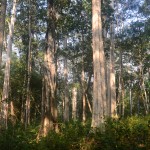
Protected Forests are generally established under individual sub-decrees, specifically for the purpose of protecting biodiversity and conservation. They are home to many endangered or threatened species. ef='https://opendevelopmentcambodia.net/topics/protected-forest/ ' class='cambodia-color'>...
Agricultural production
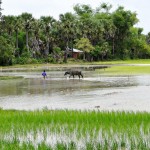
Rice field in Cambodia’s countryside. Photo by fmpgoh, taken on 15 July 2009. Licensed under CC BY-NC-ND 2.0The main products from the agriculture sector are rice, rubber, corn, vegetables, cashews and cassava. Unprocessed agricultural exports were projected to be more than 90 percent of total agricultural ef='https://opendevelopmentcambodia.net/topics/agricultural-production/ ' class='cambodia-color'>...



